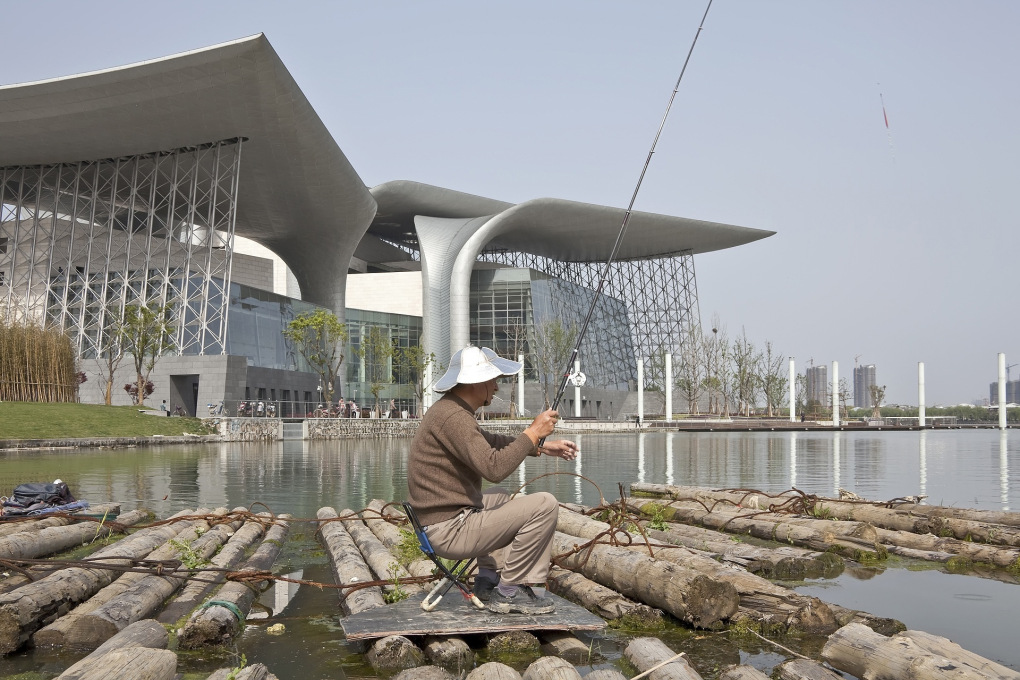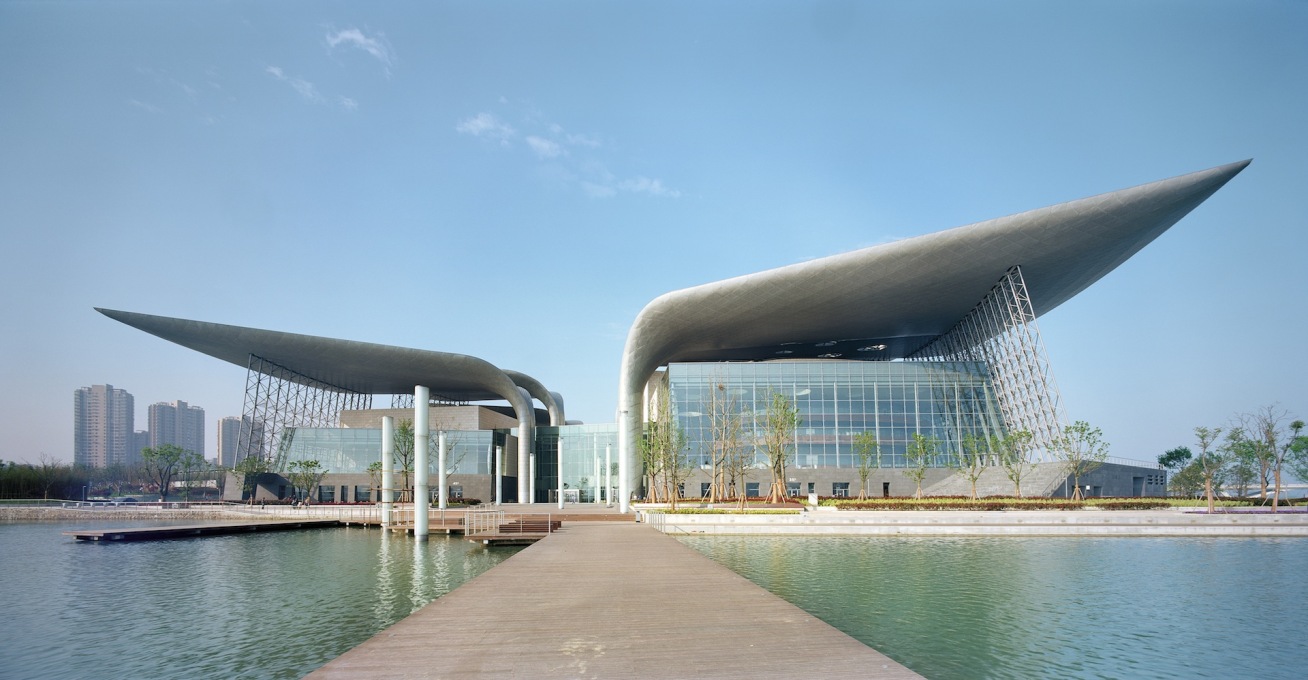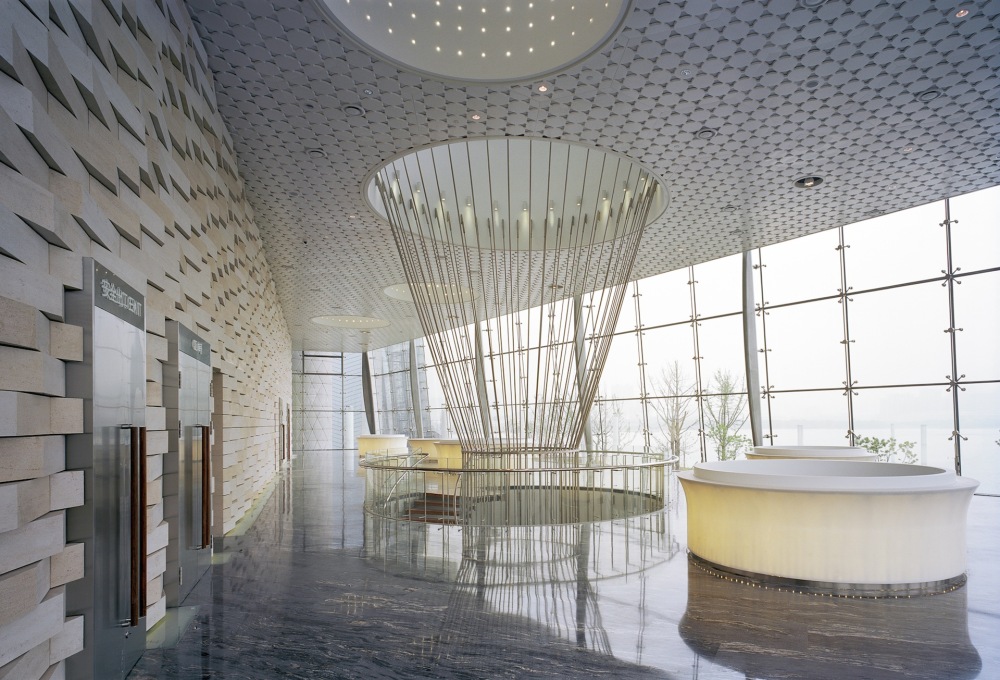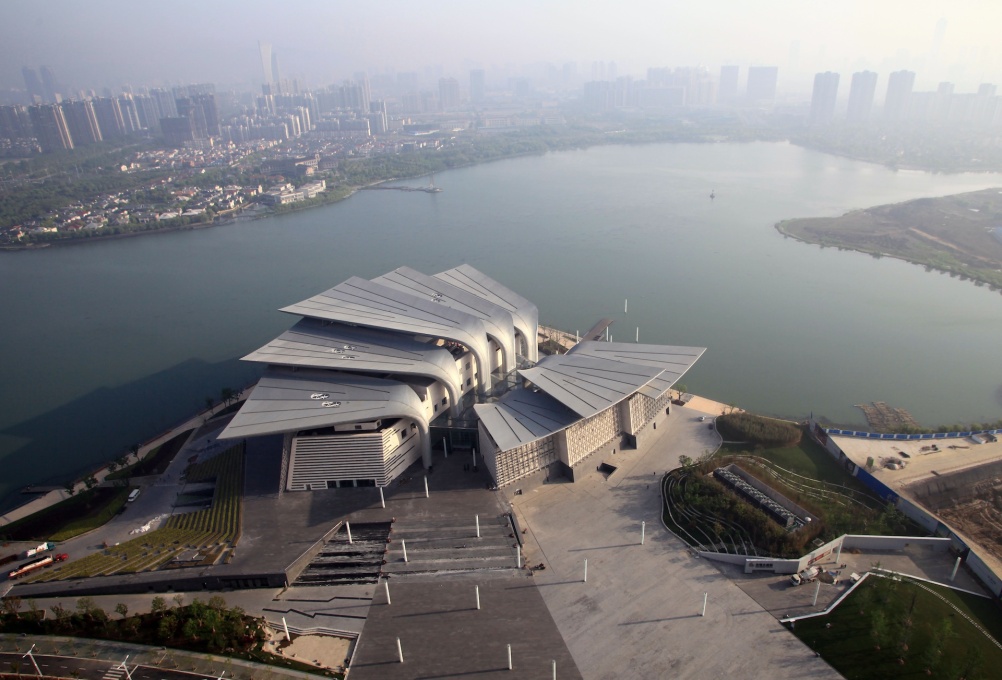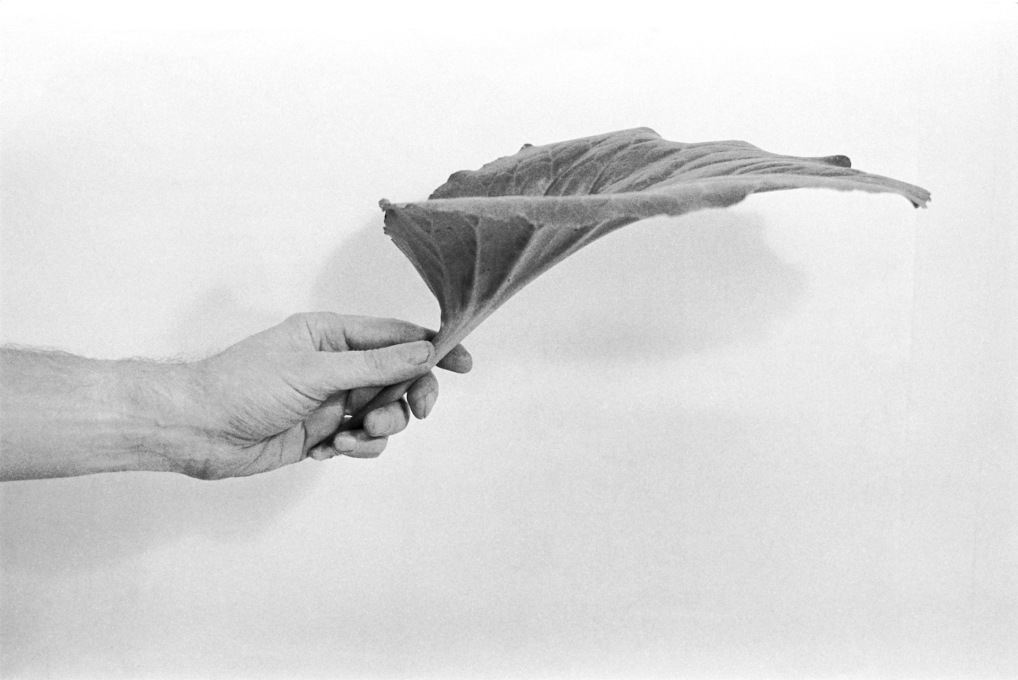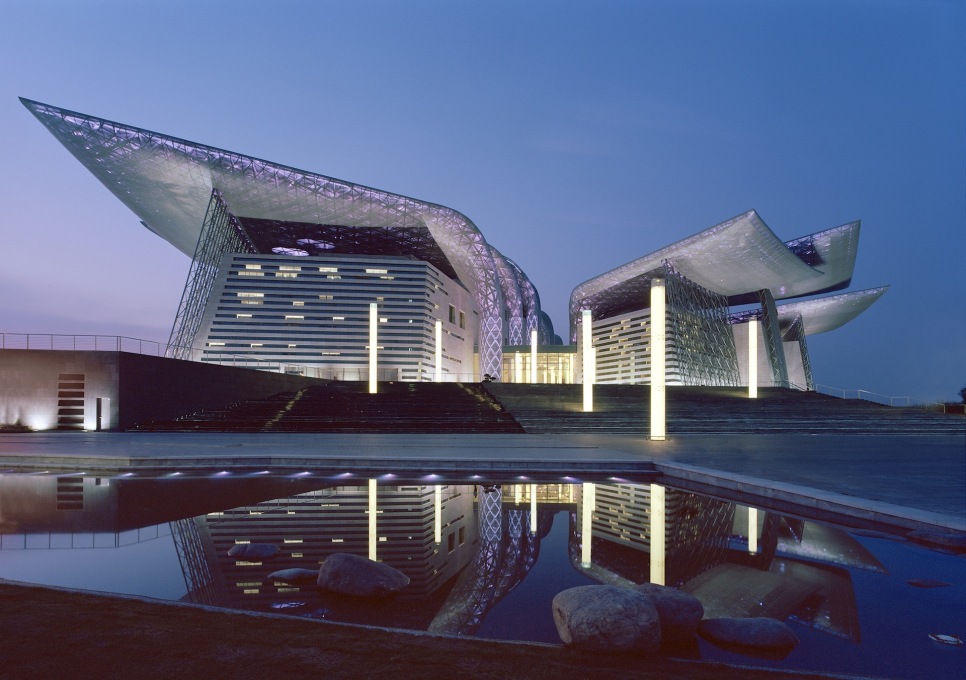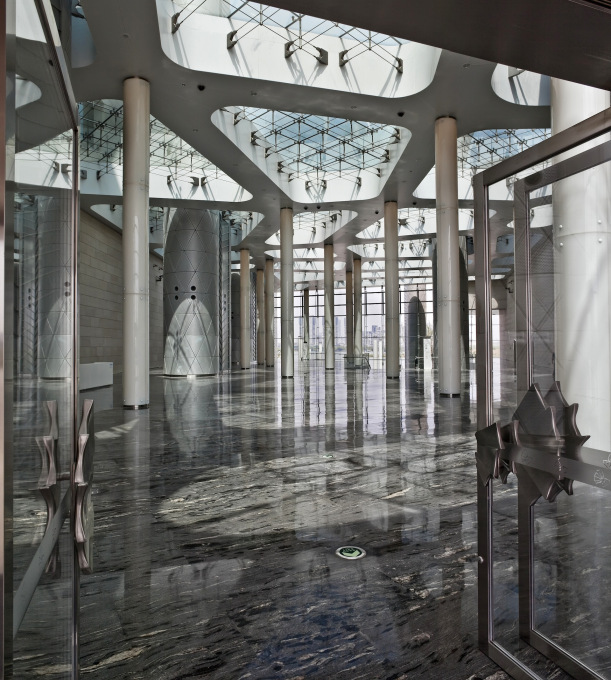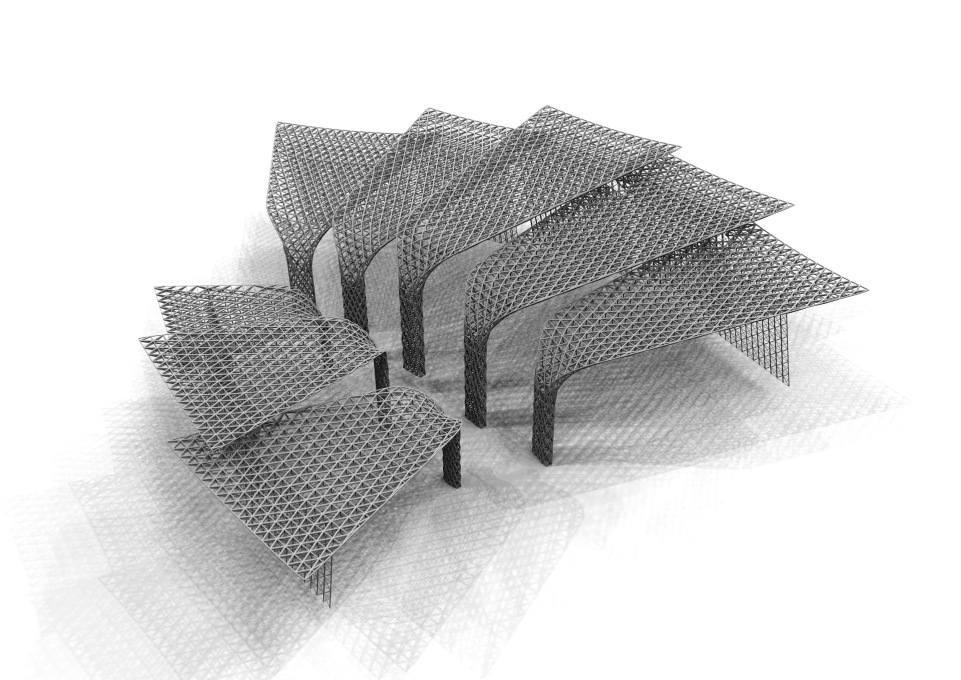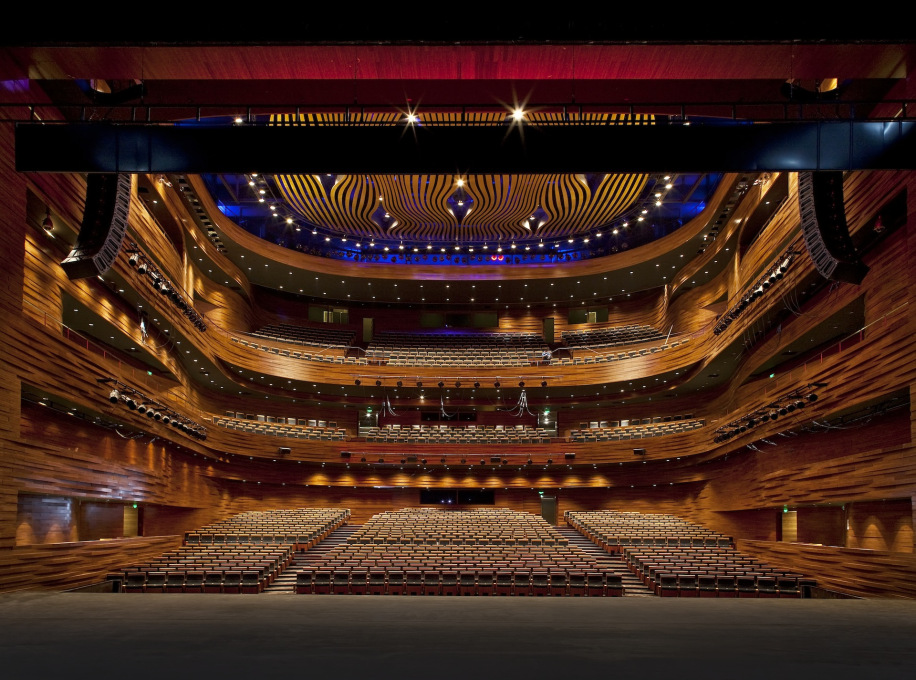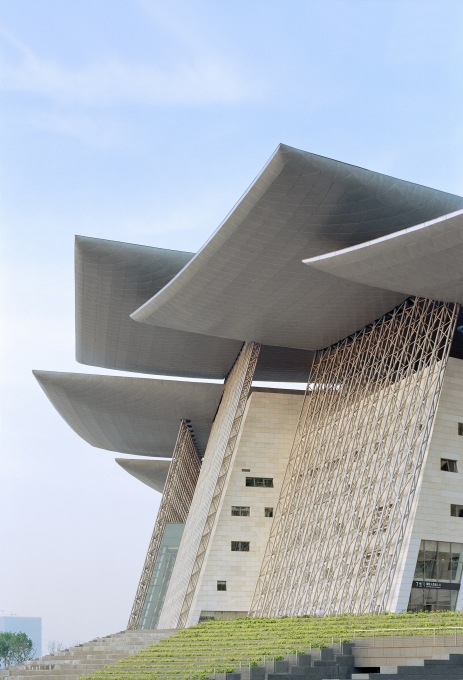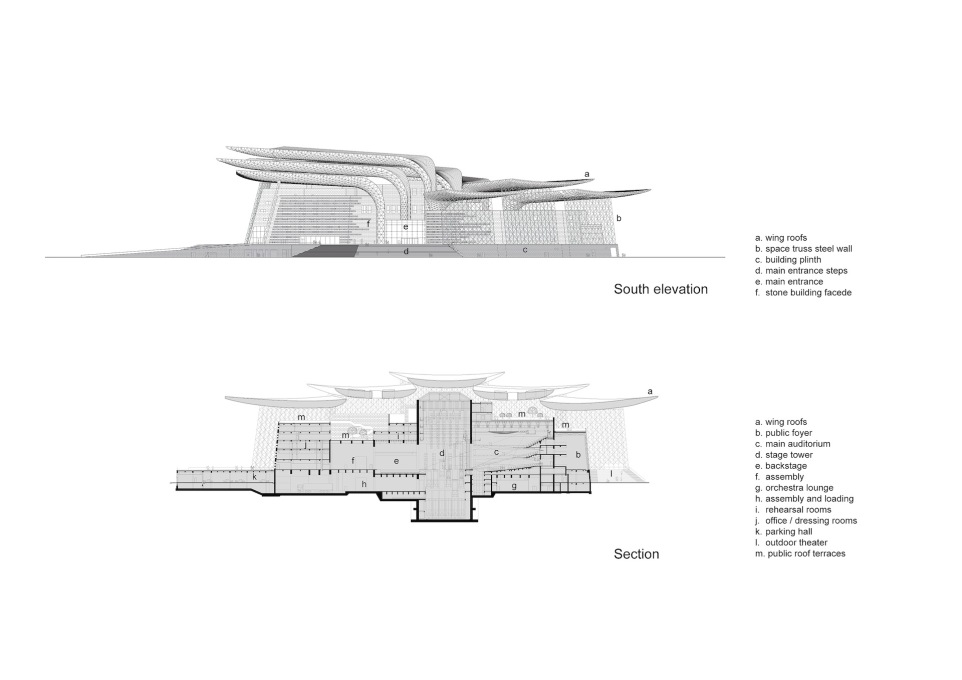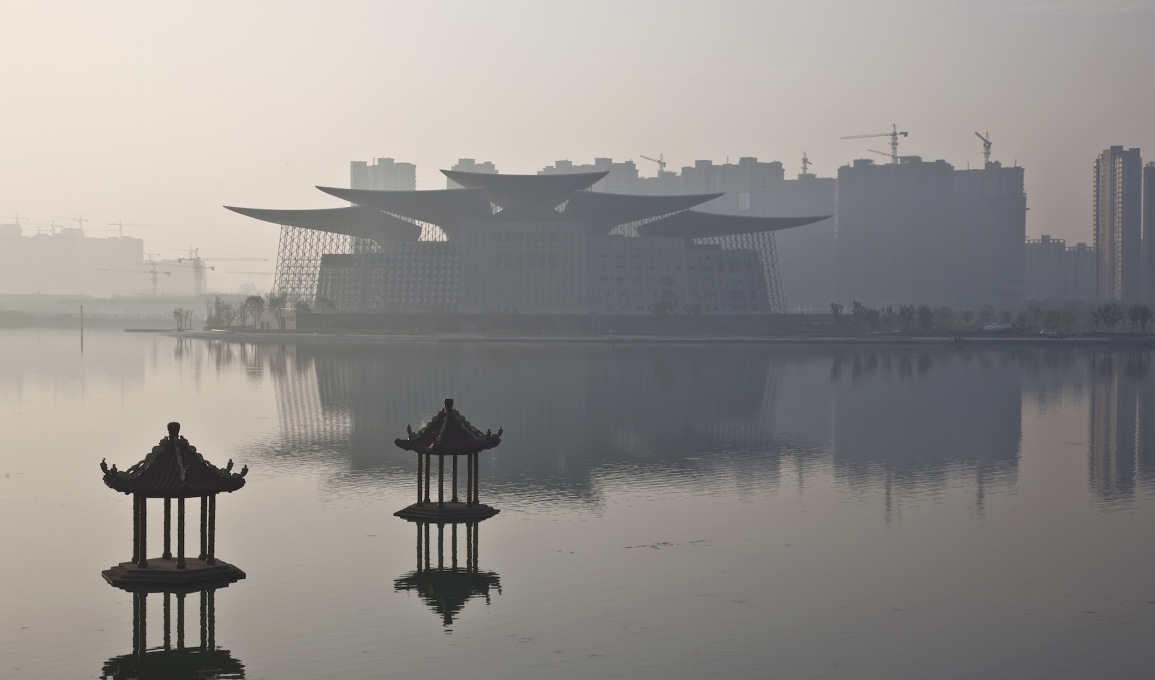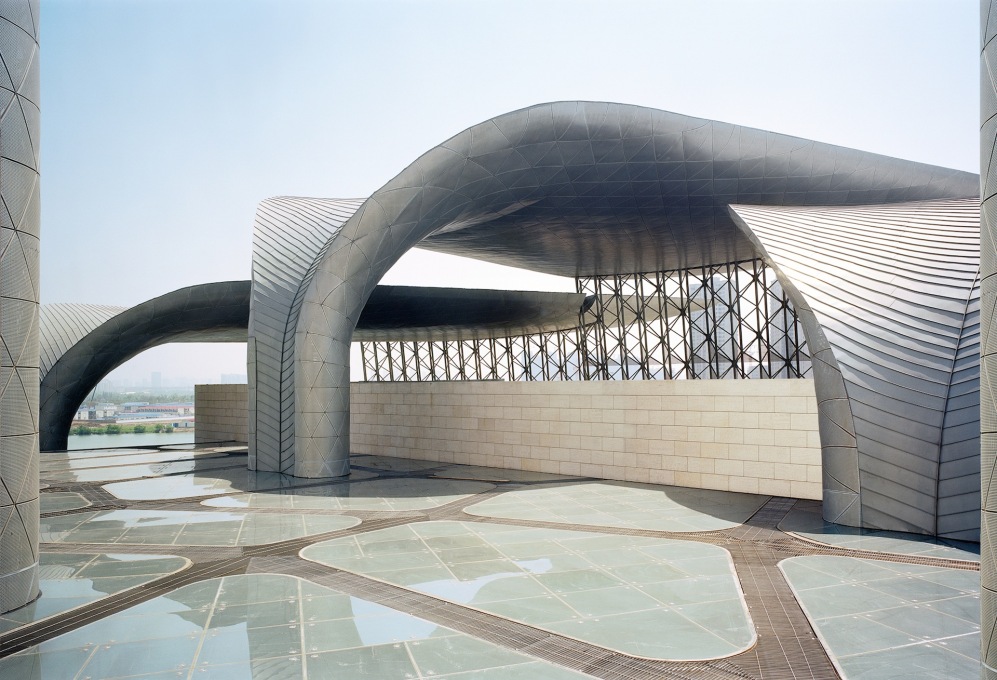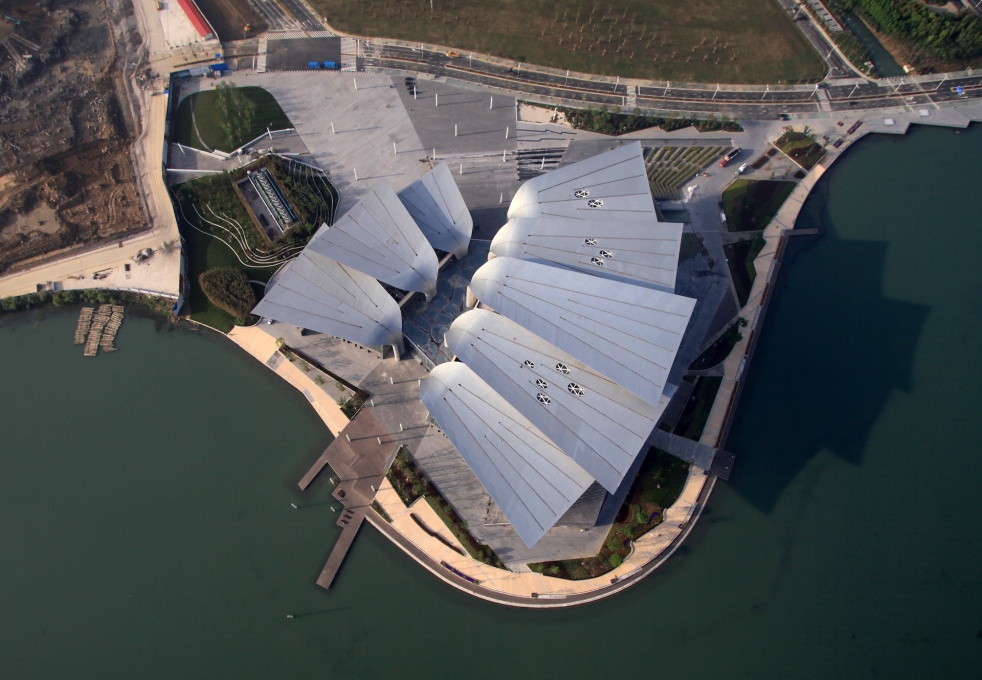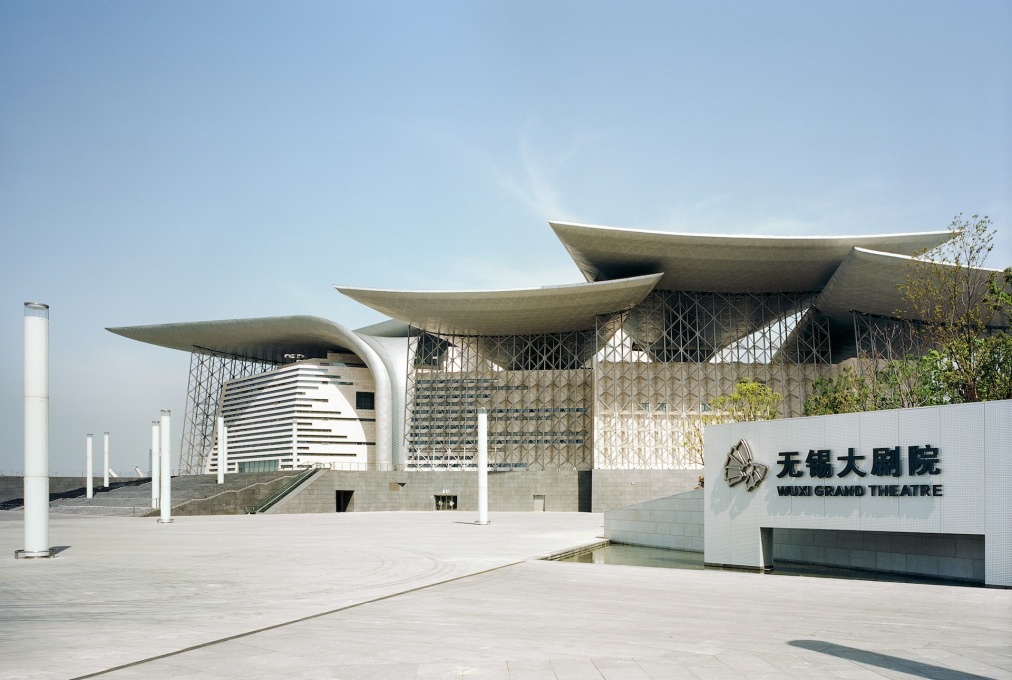Why do Chinese cities want European architects to design major cultural landmarks? Can the resulting culture clash be...a good thing? Tarja Nurmi reports from the new theater in Wuxi, designed by Finnish architects PES.
Wuxi is a rapidly-growing Chinese city located about 125 kilometers northwest of Shanghai. Its origins may date as far back as the 11th century B.C.E., when it was a small village. Today, its population is approximately seven million. I visited the city in April 2013, I was on my way to the Wuxi Grand Theater to see a traditional Chinese music theater performance in its auditorium – but I was also going to check out the Grand Theater itself.
As I approached the inland metropolis from a modern highway I was stunned by the enormous Lake Taihu, which, at 2,250 square meters, dominates the city’s southern landscape. Chinese families were enjoying picnics in lakeside parks and the motorway was adorned with finely-arranged plants and greenery. Yet as I reached the city, I found massive amounts of nondescript high-rise housing towers cast in brownish concrete.
Several years ago, city officials and politicians in Wuxi decided to build a high-profile cultural building on the shores of Lake Taihu. Rather than build on existing land, they built an artificial peninsula especially for this purpose. The location was chosen so that the building would be highly visible from the nearby Lihu Bridge. A competition for the building’s design was organized, and the invited competitors were all foreign offices: PES-Architects (Finland), 3XN (Denmark), GMP (Germany), M.A.O. (Japan), and Architecture-Studio (France). The winner was PES, who already had extensive experience in China.
The basic form of PES’s design for the WGT was inspired by a plant growing in the garden of the architects’ Helsinki studio, the Bergenia flower. The Bergenia is known for its large leaves (affectionately dubbed “elephant ears”). Eight of these giant leaves, forming a kind of a butterfly, define the theater’s main shape. When designing for China, western architects often refer to Chinese mythology; in this case the butterfly not only refers to a native Finnish plant, but also to a traditional Chinese love story, in which unhappy young lovers join together again after death as butterflies. On the lake in Wuxi they can be seen, reunited, when the building is reflected on the calm surface of the lake. This may sound like a lovely story – but the building’s shape has also been described as resembling “duck feet.” Mixed natural metaphors abound here, not all of them positive.
The building officially opened with grand ceremonies in 2012. The WGT was intended to serve as an important landmark and central meeting point for culture and recreation – and it’s the only real landmark cultural hub in this part of Wuxi. However, one minor problem: there was no pre-existing opera ensemble, symphony orchestra or theater group for whom the building was created.
Though activities in the building are now slowly taking shape, with occasional events (like a recent piano recital that drew over 6000 visitors), the building is often closed for many days at a time. The theater, café, and terrace, which were intended to remain open even without scheduled events, do not. There is even a fine sauna in the building, which is apparently disused and which someone is apparently living in (!). When I visited the site I only saw Chinese soldiers by the entrances, and the public passage through the building to the upper and lower lakeside terraces was blocked. Perhaps the situation will change when the construction of a shopping centre and an underground station are completed nearby, increasing reasons to visit the area and making it more accessible.
In Finland it’s generally necessary to have a use and a user for a new building defined before any public or private investments are made. In China it’s often the other way around. As part of the planning process, PES invited its Chinese partners to travel together and take a look at the best new opera and theater houses in Scandinavia, including the Oslo Opera by Snøhetta. Yet tactics for architecture in one (cultural) setting cannot always be imported to another.
In Oslo, Snøhetta included in its contract that even the look of the items sold in the shop and how they are displayed must be pre-approved by the architects. In a Chinese city like Wuxi however, it is a different case: Usually, only the general layout of the building and its technical solutions are under the designers’ full control. So on the one hand, PES have actually succeeded to gain pretty much control over the theater‘s interiors in comparison to other projects in China. The WGT includes some well executed details and innovative elements such as the solid bamboo cladding of the main auditorium, custom design glass brick walls, or refined suspended steel stair details. Yet on the other hand, the inside of this grand building has already started to fill with new carpeting, pretty flower decorations and odd furnishings that clearly do not belong to the original concept or design. As the WGT is still not fully operational, it’s possible that the architects’ original functional plans will be forgotten.
The WGT is yet another example of image-building architecture designed by European architects for China. Wuxi, like many other Chinese cities, has grown very fast without developing much of a new identity, and so has reached out to big-name European firms to gain visibility. But at what cost? Are Chinese cities short-sightedly destroying a very real, local urban identity that could be made visible without foreign aid? It’s true that the new high-rise towers I saw upon entering the city haven’t done the job. But the WGT can only contribute to Wuxi’s identity if it can be integrated into the pre-existing cultural life of the city.
Despite its internal problems, I found the theater’s outward appearance and leaf/butterfly motif to suit the lakeside location perfectly. There is evidence that the architects have made allowances to accommodate the city’s culture and context with this design, for instance, the perforated aluminium cladding of the building wings that allows extravagant coloured lights to shine through at night – a very Chinese feature – despite the fact that the architects would prefer a more muted appearance. And the lush garden and landscape design by Finnish landscape architect Gretel Hemgård is sensitive to the need for the WGt to blend with the natural lakeside surroundings.
Yet in bright daylight, the interior remains puzzling. Its unintended additions, like brightly-colored lockers and flower arrangements, shout “culture clash!” I could immediately see: not all here is as the architects intended it.
– Tarja Nurmi, Helsinki




